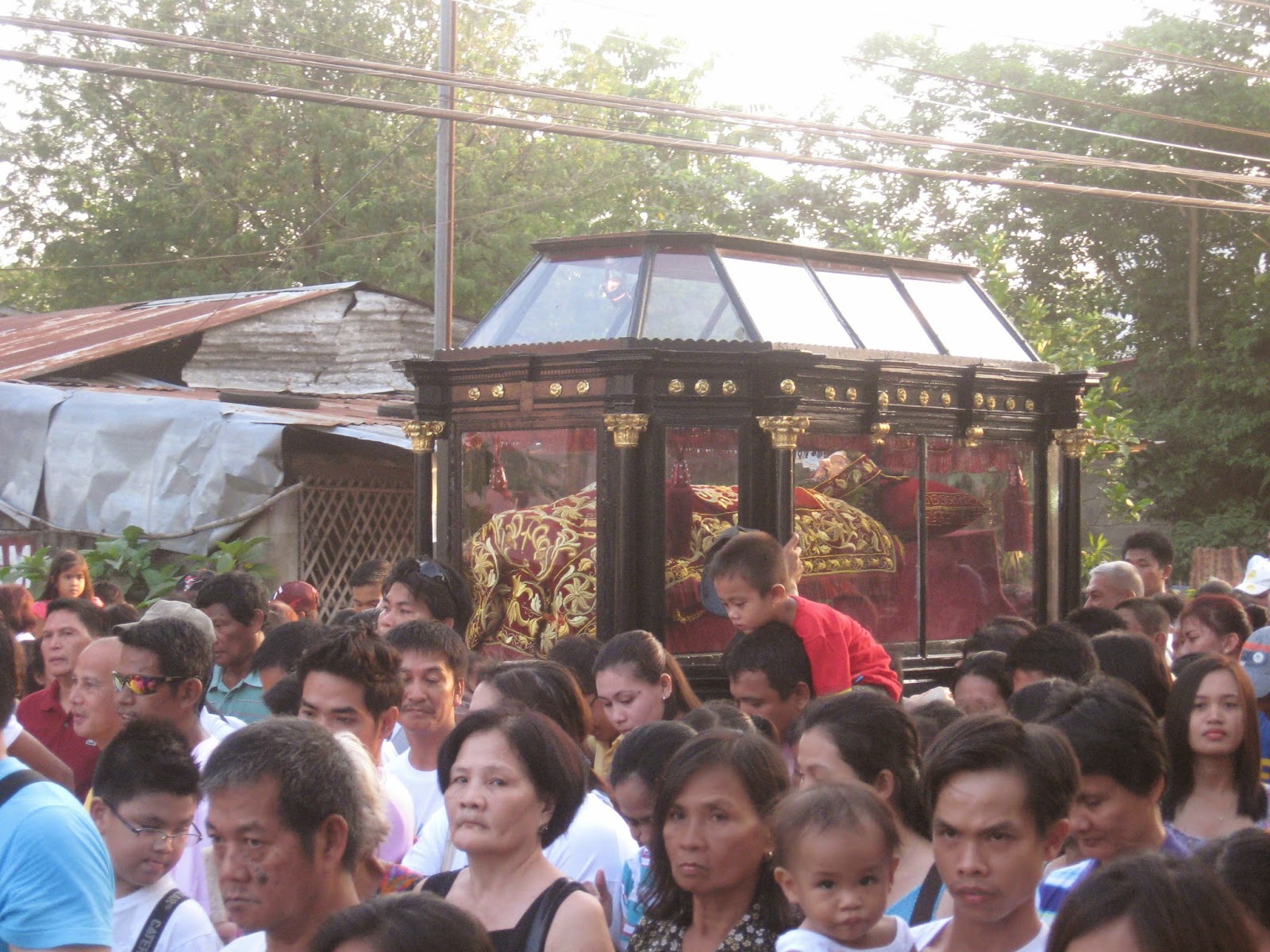We were a little surprised to see that Lent isn't acknowledged more here than it seems to be. Our previous experience with Lent had been to see Mardi Gras or Carnaval celebrated right before Ash Wednesday, followed by 40 days of reflection, sacrifice, and repentance, until Easter. Here, we saw people marked with ashes on Ash Wednesday, as expected, and then the carnivals and festivals all began, in every town! And they went on for weeks, with lots of extra market areas opened up along the streets, additional food vendors in the plazas, and carnival rides in some of the towns. But, on Good Thursday and Friday, many of the malls and other businesses closed down, and the radio stations went off the air.
 |
| Corn on the cob |
 |
| Palm Sunday, with some fancy braided palms. |
 |
| Buko juice -- made from young coconuts. |
 |
| There's a crucifix, kind of hard to spot in this pic. |
 |
| So many heads of black hair! |
Later that night, President Monahan, our mission president called, to see if we would be available to drive to Manila the next day. This was a bit alarming, as we'd hoped to never have to drive in that city! Manila was our first exposure to Filipino driving and it is such a huge city that the whole idea was really unnerving. But he needed a ride for a young sister missionary to a medical facility there and couldn't do it himself that day. Fortunately, his wife would go with us, and she's a lot more familiar with the city and the route. So . . .
We picked up Sister Monahan in the morning and drove to pick up the sister missionary in Binalonan. There is a sequence of three expressways that extends nearly to Urdaneta from Manila, so most of our trip was pretty fast sailing. At one point, though, we did discover that we'd taken the wrong route and had to backtrack, which cost us some time.
 |
| Were it not for our wrong turn, we never would have discovered that the Holy Land is in the Philippines! |
 |
| And Mexico! Who knew?! |
After we got off the expressway approaching Manila, the main street we had to take was undergoing a lot of construction, which bogged things down quite a bit. Otherwise, I think the traffic might not have been as bad as we remembered. I can think of two reasons for this: 1. It was Good Saturday and business was slower. 2. We've become more conditioned to Filipino driving. All in all, the trip to Manila took us about five hours.
We went to the Missionary Recovery Center and got our young sister situated, where she would stay while undergoing tests and treatment at a hospital nearby. We enjoyed a nice visit and dinner with two senior missionary couples living and working there, then got on our way back again.
Not too far down the road, we passed that last toll station we'd gone through on our way into Manila. The lines of traffic by that time stretched at least a couple miles, and I felt so bad for the people in those lines at that point. I'm sure they must've spent at least an hour, waiting there. A lot of people would be going to Manila for Easter.
Our trip home, amazingly enough, took only three hours. No heavy traffic, no long lines at toll booths. Where the expressway ends and we got off, there was a lot of slow-moving traffic headed onto the expressway, going the other direction. We saw several tour buses and large open-bed trucks lined with chairs - - oh, yes, they travel this way, too! - - and thought of all those people who were likely headed back to Manila after visiting Manaoag. They would have a very long night on the road, and sitting in line for toll stations.
We weren't sure on Easter morning which branch of our church we would be able to attend. With so many people in town and traffic being diverted onto our little street, it was sometimes hard to get out of our driveway. If this were the case, we would just walk to the Manaoag chapel, a 12-minute walk. But we were able to get out, so we drove to San Jacinto, which is a tiny branch, more in need of our help. I ended up playing piano in Sacrament Meeting there, which was nice and simple, with three speakers telling the Easter story and of the Atonement of Christ and its importance in our lives. (Well, that's what I gathered from what I was able to undertand!) After three hours of meetings and classes, I had one piano student, and then we drove on to San Fabian, where there are branches meeting both in morning and afternoon. So, after similar meetings and classes there, and two more piano lessons, we were pretty well fed, spiritually and socially. : )
 |
| San Jacinto chapel |
 | ||
| San Fabian chapel (photos taken on a rainy day in August) |
Each holiday we spend here in the Philippines is another new experience for us, with some differences and some similarities to our customs at home. We're so grateful for this experience, and we're grateful for the wondrous blessings and promises that are ours, thanks to the sacrifice of our Savior, Jesus Christ. Happy Easter to you all . . . after the fact. : )




































